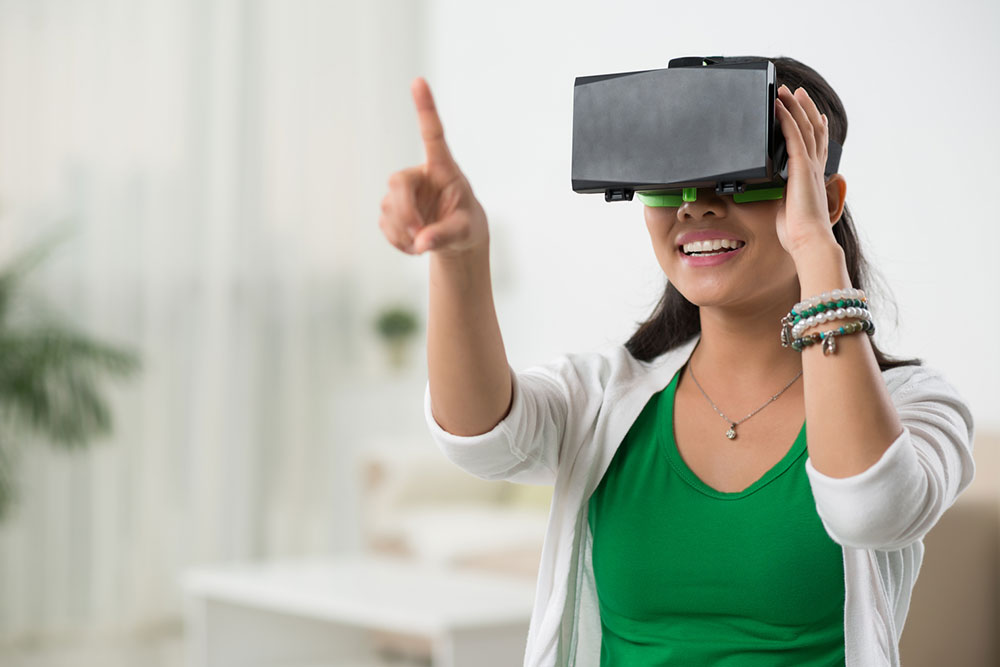8 must-know features of the Apple Vision Pro Headset

The Apple Vision Pro, a headset, is one of Apple’s newest innovations, bringing about huge changes in computing and making it easier to connect with people. It allows users to perform several activities, such as computing tasks, watching movies, or using FaceTime as if they are holographic projections overlaid with their real surroundings. The Apple Vision Pro includes a host of features designed to enhance and streamline the user experience, making it more enjoyable.
1. Mixed-reality
The main feature of the Apple Vision Pro that users must know about is the combination of AR (augmented reality) and VR (virtual reality). The AR feature of the headset makes it possible for users to stay connected to the real world and view all their surroundings while computing. The feature allows them to see the apps and their windows displayed over their surroundings when wearing the headset. The VR feature, on the other hand, allows users to completely immerse themselves in the virtual reality environment without having any view of the real-life surroundings.
2. Immersive controls
The Apple Vision Pro features a Digital Crown on top of the headset. This can be rotated to control the level of immersiveness, which means it allows users to easily switch to a complete VR vision mode just with the turn of a knob.
3. Eye tracking- and gesture-based controls
The Apple Vision Pro’s ability to control functionality and navigation when the headset is on is one of its most impressive features. Since the headset is based on augmented and virtual reality, it does not have a surface that users can touch to control the computing, such as in phones. Rather, it requires users to navigate through the menus with gestures made by their hands and fingers. To highlight an app, the users are required to look at it.
Tech reviewers have also been highly impressed by the eye-tracking speed of the headset for this feature. Similarly, users can open an app by simply tapping their fingers together. In addition to this, the headset enables users to give voice commands to operate the app.
4. Eyesight technology
The Apple headset allows users to stay connected to their real-world surroundings while also keeping the real world connected to them. One of its standout features is called EyeSight, which projects the user’s eyes onto the curved screen on the front of the headset. This means that when users look at people in their environment, those individuals can maintain eye contact and communicate with them effectively.
5. Optic ID
Like most other features of the Apple headset, the authentication feature revolves around eyes and vision. This means that the Vision Pro features biometric authentication, which scans the user’s iris to unlock the headset’s software and function for them. This authentication feature is called Optic ID.
6. Spatial camera
The Apple Vision Pro features 12 cameras, each of which has a different function. Among these, the spatial camera is the one that users will most frequently interact with. The Vision Pro enables users to take and view photos and videos in a “spatial” format. This means that the photos and videos appear lifelike and 3D, as if the moment is happening right before the user. For videos, the headset also records spatial audio, which enhances the user’s immersive viewing experience. The headset allows for spatial viewing not only for pictures taken with it but also for other types of media.
7. Mac display extension
Users who own a MacBook can experience futuristic computing with their Vision Pro. The headset is equipped with a feature that allows users to make it an extension of their MacBook display. This means users can use the MacBook monitor to easily continue their tasks. The controls will completely shift to gesture- and voice-based, and the screen will be an AR projection over the actual surroundings.
8. 3D persona
The Vision Pro headset changes how users interact with each other via FaceTime, and video calls through its 3D persona feature. For instance, it scans the user wearing the headset and creates a persona or a 3D figure of them. So, during a FaceTime call, the person on the other end sees the user’s persona rather than their actual face.
The scanners and cameras of the Vision Pro ensure the capture of even the smallest details of the user, creating a persona with precise eye, hand, and finger gestures.


